#philippine colonial architecture
Text
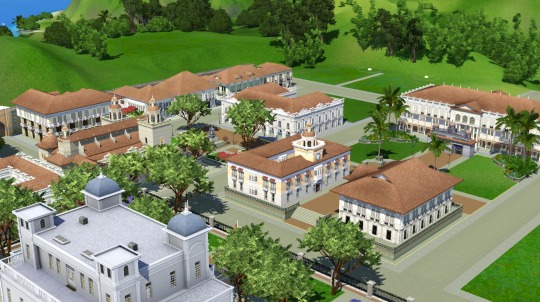
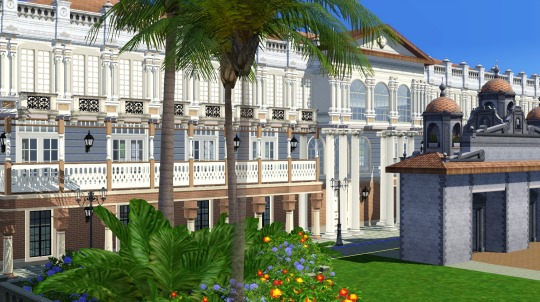

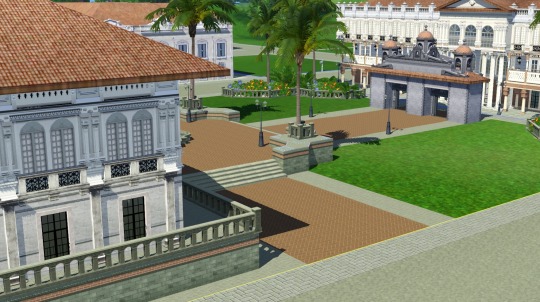
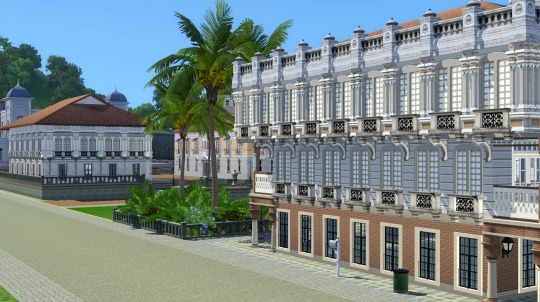
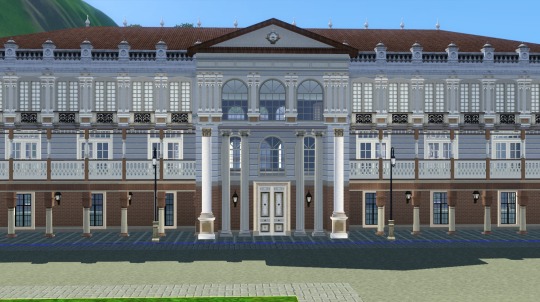

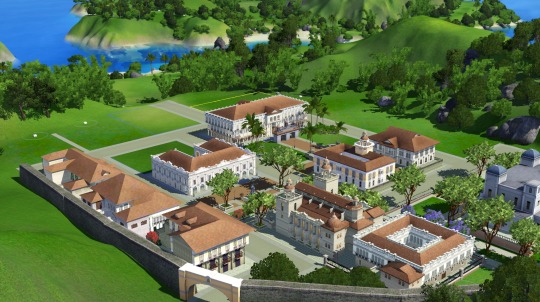
A large luxury hotel built smack dab in the middle of the plaza. Still not sure what to make of it yet, as it could either be a swanky deluxe dormitory, a luxury lounge, a rabbit hole of some sort, or even a resort (where does the large pool go, though?). It's based on a combination of buildings (real world hotels at the Las Casas Filipinas resort and living history museum), one a combination of hotels styled after a historic accesoria and the reconstructed Hotel de Oriente, which used to stand in what is now Plaza San Lorenzo in Binondo.
One of my tentative names for it is the Hotel McCarric, indicative of the owners of the hotel and a deliberate shout-out to @danjaley's McCarric Scenes. I floated up the possibility of having that family in the save a while back. The McCarric family I've planned for this save was one of those merchants who made it big here and decided to invest on a large venture in the walled city. They're likely very distant relatives or descendants of those McCarrics, having made their fortune as traders in hemp rope and sugar.
Historically, this is actually very plausible, as the British had a sizeable presence in Philippine cities as entrepreneurs.
Anyway, about that arch. Should I keep it in place or reconstruct it in front of Fort St. Simeon instead?
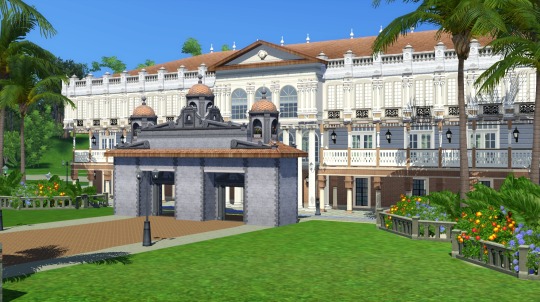
51 notes
·
View notes
Text
the thing about being from a place whose written history only began with colonialism is that it's like. i know you. i love you. you're in my very bones. but at the same time: who are you? who are you? who are you?
#route66#this is the difference btwn my filipino ancestry and indian ancestry#bc there's lots of rich documented indian history in writing & architecture & religion & food even if the british stole a fuckton of it#but the philippines is like. literally what was going on!!!!!! what was happening!!! tell me#but unearthing pre-colonial filipino history is essentially an archeological event
17 notes
·
View notes
Text
On May 28, 1914, the Institut für Schiffs-und Tropenkrankheiten (Institute for Maritime and Tropical Diseases, ISTK) in Hamburg began operations in a complex of new brick buildings on the bank of the Elb. The buildings were designed by Fritz Schumacher, who had become the Head of Hamburg’s building department (Leiter des Hochbauamtes) in 1909 after a “flood of architectural projects” accumulated following the industrialization of the harbor in the 1880s and the “new housing and working conditions” that followed. The ISTK was one of these projects, connected to the port by its [...] mission: to research and heal tropical illnesses; [...] to support the Hamburg Port [...]; and to support endeavors of the German Empire overseas.
First established in 1900 by Bernhard Nocht, chief of the Port Medical Service, the ISTK originally operated out of an existing building, but by 1909, when the Hamburg Colonial Institute became its parent organization (and Schumacher was hired by the Hamburg Senate), the operations of the ISTK had outgrown [...]. [I]ts commission by the city was an opportunity for Schumacher to show how he could contribute to guiding the city’s economic and architectural growth in tandem, and for Nocht, an opportunity to establish an unprecedented spatial paradigm for the field of Tropical Medicine that anchored the new frontier of science in the German Empire. [...]
[There was a] shared drive to contribute to the [...] wealth of Hamburg within the context of its expanding global network [...]. [E]ach discipline [...] architecture and medicine were participating in a shared [...] discursive operation. [...]
---
The brick used on the ISTK façades was key to Schumacher’s larger Städtebau plan for Hamburg, which envisioned the city as a vehicle for a “harmonious” synthesis between aesthetics and economy. [...] For Schumacher, brick [was significantly preferable] [...]. Used by [...] Hamburg architects [over the past few decades], who acquired their penchant for neo-gothic brickwork at the Hanover school, brick had both a historical presence and aesthetic pedigree in Hamburg [...]. [T]his material had already been used in Die Speicherstadt, a warehouse district in Hamburg where unequal social conditions had only grown more exacerbated [...]. Die Speicherstadt was constructed in three phases [beginning] in 1883 [...]. By serving the port, the warehouses facilitated the expansion and security of Hamburg’s wealth. [...] Yet the collective profits accrued to the city by these buildings [...] did not increase economic prosperity and social equity for all. [...] [A] residential area for harbor workers was demolished to make way for the warehouses. After the contract for the port expansion was negotiated in 1881, over 20,000 people were pushed out of their homes and into adjacent areas of the city, which soon became overcrowded [...]. In turn, these [...] areas of the city [...] were the worst hit by the Hamburg cholera epidemic of 1892, the most devastating in Europe that year. The 1892 cholera epidemic [...] articulated the growing inability of the Hamburg Senate, comprising the city’s elite, to manage class relationships [...] [in such] a city that was explicitly run by and for the merchant class [...].
In Hamburg, the response to such an ugly disease of the masses was the enforcement of quarantine methods that pushed the working class into the suburbs, isolated immigrants on an island, and separated the sick according to racial identity.
In partnership with the German Empire, Hamburg established new hygiene institutions in the city, including the Port Medical Service (a progenitor of the ISTK). [...] [T]he discourse of [creating the school for tropical medicine] centered around city building and nation building, brick by brick, mark by mark.
---
Just as the exterior condition of the building was, for Schumacher, part of a much larger plan for the city, the program of the building and its interior were part of the German Empire and Tropical Medicine’s much larger interest in controlling the health and wealth of its nation and colonies. [...]
Yet the establishment of the ISTK marked a critical shift in medical thinking [...]. And while the ISTK was not the only institution in Europe to form around the conception and perceived threat of tropical diseases, it was the first to build a facility specifically to support their “exploration and combat” in lockstep, as Nocht described it.
The field of Tropical Medicine had been established in Germany by the very same journal Nocht published his overview of the ISTK. The Archiv für Schiffs- und Tropen-Hygiene unter besonderer Berücksichtigung der Pathologie und Therapie was first published in 1897, the same year that the German Empire claimed Kiaochow (northeast China) and about two years after it claimed Southwest Africa (Namibia), Cameroon, Togo, East Africa (Tanzania, Burundi, Rwanda), New Guinea (today the northern part of Papua New Guinea), and the Marshall Islands; two years later, it would also claim the Caroline Islands, Palau, Mariana Islands (today Micronesia), and Samoa (today Western Samoa).
---
The inaugural journal [...] marked a paradigm shift [...]. In his opening letter, the editor stated that the aim of Tropical Medicine is to “provide the white race with a home in the tropics.” [...]
As part of the institute’s agenda to support the expansion of the Empire through teaching and development [...], members of the ISTK contributed to the Deutsches Kolonial Lexikon, a three-volume series completed in 1914 (in the same year as the new ISTK buildings) and published in 1920. The three volumes contained maps of the colonies coded to show the areas that were considered “healthy” for Europeans, along with recommended building guidelines for hospitals in the tropics. [...] "Natives" were given separate facilities [...]. The hospital at the ISTK was similarly divided according to identity. An essentializing belief in “intrinsic factors” determined by skin color, constitutive to Tropical Medicine, materialized in the building’s circulation. Potential patients were assessed in the main building to determine their next destination in the hospital. A room labeled “Farbige” (colored) - visible in both Nocht and Schumacher’s publications - shows that the hospital segregated people of color from whites. [...]
---
Despite belonging to two different disciplines [medicine and architecture], both Nocht and Schumacher’s publications articulate an understanding of health [...] that is linked to concepts of identity separating white upper-class German Europeans from others. [In] Hamburg [...] recent growth of the shipping industry and overt engagement of the German Empire in colonialism brought even more distant global connections to its port. For Schumacher, Hamburg’s presence in a global network meant it needed to strengthen its local identity and economy [by purposefully seeking to showcase "traditional" northern German neo-gothic brickwork while elevating local brick industry] lest it grow too far from its roots. In the case of Tropical Medicine at the ISTK, the “tropics” seemed to act as a foil for the European identity - a constructed category through which the European identity could redescribe itself by exclusion [...].
What it meant to be sick or healthy was taken up by both medicine and architecture - [...] neither in a vacuum.
---
All text above by: Carrie Bly. "Mediums of Medicine: The Institute for Maritime and Tropical Diseases in Hamburg". Sick Architecture series published by e-flux Architecture. November 2020. [Bold emphasis and some paragraph breaks/contractions added by me. Text within brackets added by me for clarity. Presented here for commentary, teaching, criticism purposes.]
#abolition#ecology#sorry i know its long ive been looking at this in my drafts for a long long time trying to condense#but its such a rich comparison that i didnt wanna lessen the impact of blys work here#bly in 2022 did dissertation defense in architecture history and theory on political economy of steel in US in 20s and 30#add this to our conversations about brazilian eugenics in 1930s explicitly conflating hygiene modernist architecture and white supremacy#and british tropical medicine establishment in colonial india#and US sanitation and antimosquito campaigns in 1910s panama using jim crow laws and segregation and forcibly testing local women#see chakrabartis work on tropical medicine and empire in south asia and fahim amirs cloudy swords#and greg mitmans work on connections between#US tropical medicine schools and fruit plantations in central america and US military occupation of philippines and rubber in west africa#multispecies#imperial#indigenous#colonial#landscape#temporal#see also us mosquito campaigns in panama and british urban planning in west africa and rohan deb roy work on india bengal entomology#ecologies#bugs#tidalectics#archipelagic thinking#plantations
13 notes
·
View notes
Text

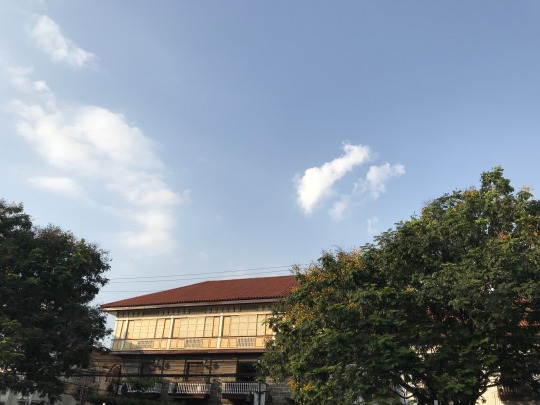

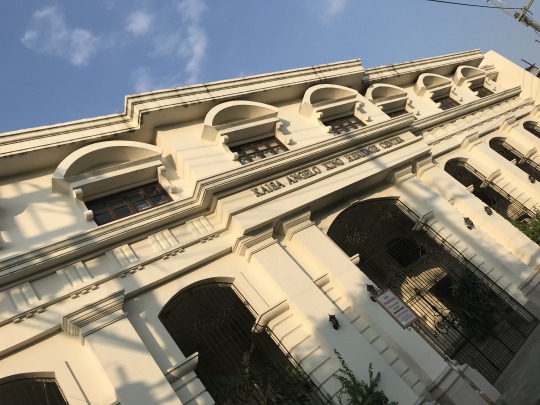

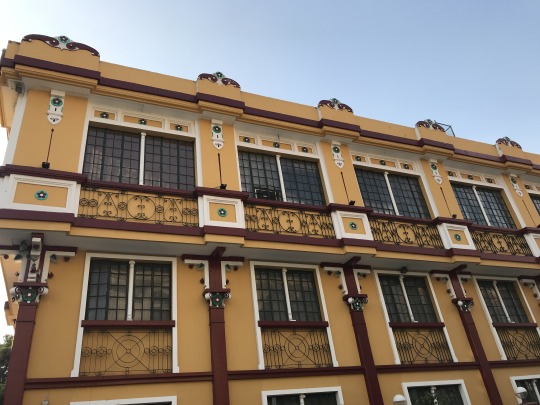



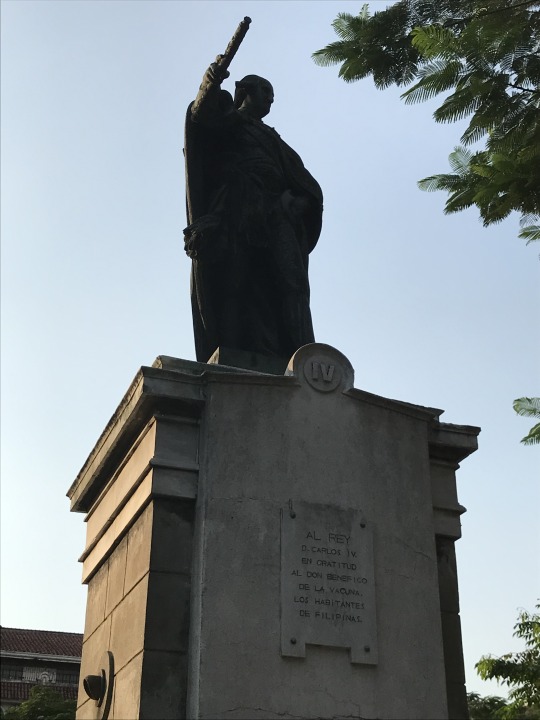
City Shots 5 (2022)
My opportunities to visit heritage sites have been few and far in between, what with recent upheavals and major life milestones coming about. Unlike in the 2010s, where I could make these trips on a whim, things were different in the 2020s. Up until I earned enough to go on trips on my own, I largely traveled with my family, especially during the pandemic. The images taken here were taken during Holy Week, when my father agreed to do our annual Visita Iglesia in the Old City of Intramuros.
The shots were taken using two phones (an older phone was used in some shots as a precautionary measure against thieves). Due to the afternoon heat, my family could only go down one road rather than pray through all the stations scattered in the district. Despite this setback, I had enough time in between prayer to take a modest selection of images of the reconstructed and themed structures of the city.
This is the first of two parts. View the second post here.
Important historic notes (including one about the street art) below the cut!
Camera: iPhone 6 and iPhone 7
Location: Plaza Roma, Luna Street, various side streets, and the Plaza San Luis Complex, Intramuros, Manila, Philippines
Date: 14 April 2022
Usage rights: By request. Noncommercial only.
Only one building complex, the San Agustin Church and convent, truly survived the bombings of World War II. Older historic buildings (including the Manila Cathedral and the Ayuntamiento de Manila) had to be rebuilt. One building, the Casa Manila Museum, was a reconstructed structure from a different district altogether.
Some of the newer buildings were also made to superficially resemble 18th and 19th Century colonial buildings. The district's current administration mandated that all new structures in the city must be in that style to preserve its atmosphere. The result is not quite an authentic historic district but what feels sometimes like a theme park version of one.
Featured in the parking lot street art is Manila's heraldic animal, the "sea lion," a chimerical mix of the front parts of a lion and the tail of a fish (not to be confused with the animal of the same name). The coat of arms of Manila, which included this creature, was first bestowed upon the city by King Philip II on the 20th of March 1596. This is not to be confused with the Singaporean merlion, which is a chimerical beast with the head of a lion and the body of a fish, first used in 1964.
#photography#city shots#urban#urban photography#architecture#buildings#trees#church#colonial philippines
7 notes
·
View notes
Text
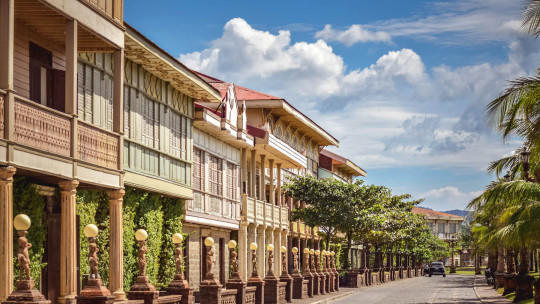
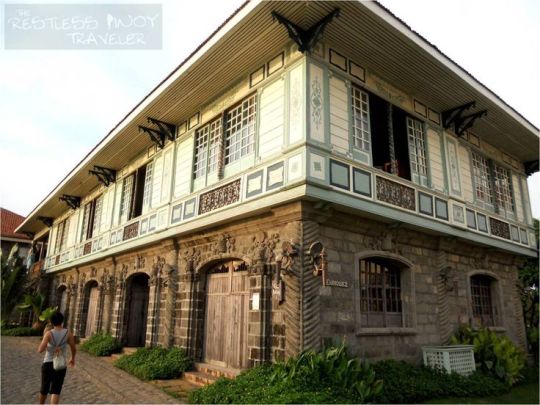
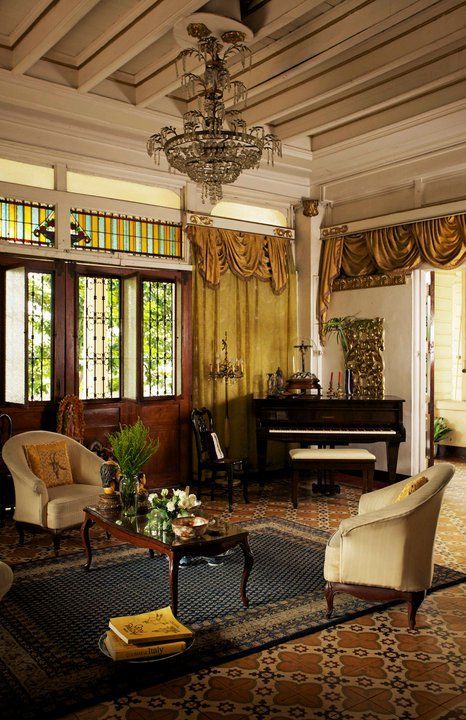

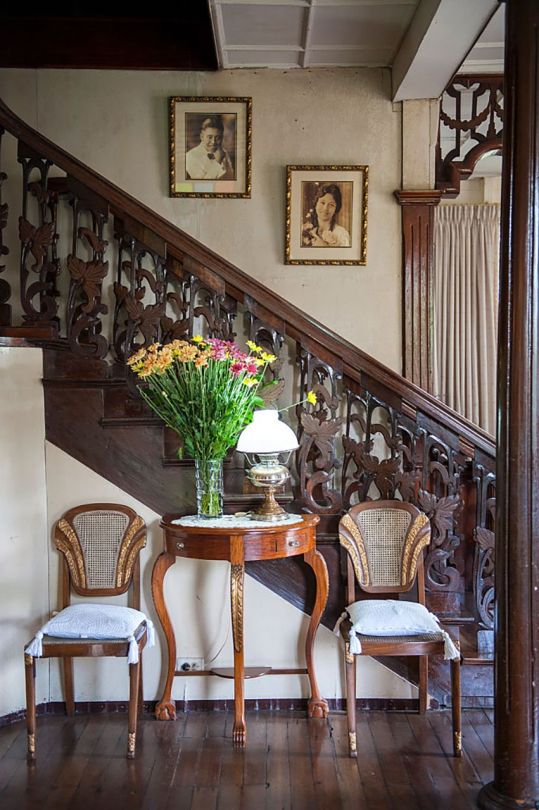
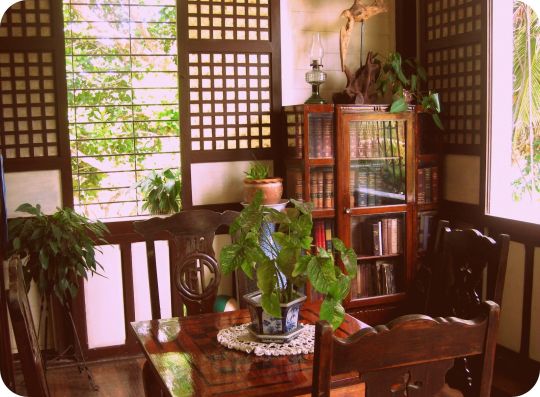

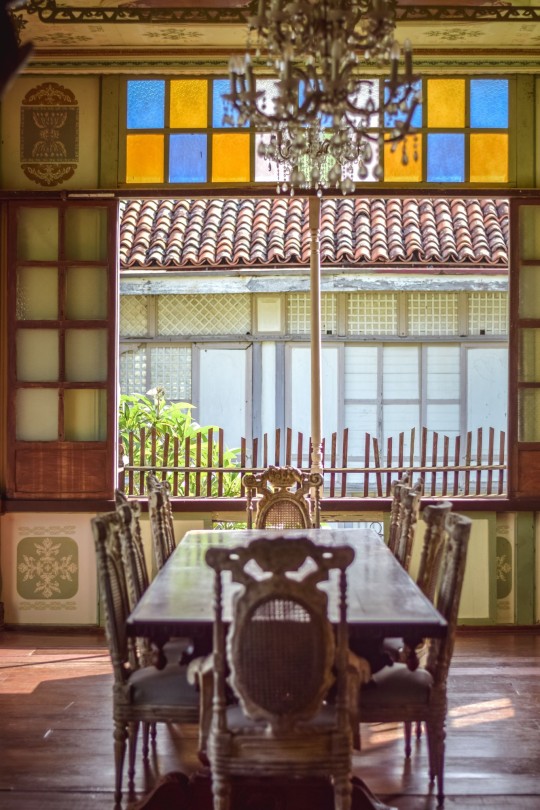
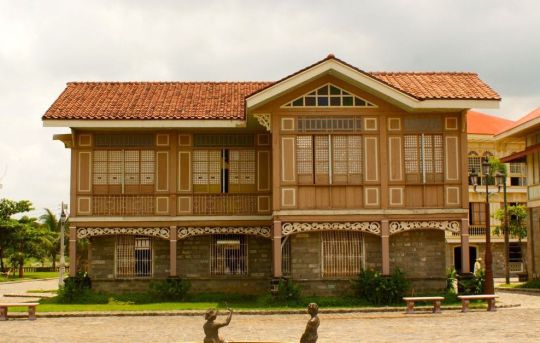
"You smell like the sun," my mother would say to me when I was child playing on a balmy summer day. But how can a person smell like the sun? The sun is far away and did not emit a smell. As grew, I could understand. I could smell the sun. The warmth catching on my skin and hair, the humidity covering me from head to toes. I'm like a the grass in summer, it with a deeper scent unmasked by dew. My people smell of the sun. The bringer of light and life. We thrive and celebrate in the sun's golden rays as it blesses our skin with a golden hue.
•
•
•
•
•
•
•
•
•
Thinking of summers in the homeland. Our traditional architecture brings me so much warmth. Built to withstand the heat and rain. I hope to see it soon.
3 notes
·
View notes
Text
Malate Church declared ‘important cultural property’
via the Daily Tribune, 24 April 2023: The Church Complex of the Our Lady of Remedies Parish, also known as the Malate Church, has been declared an important cultural property by the National Museum of the Philippines.
via the Daily Tribune, 23 April 2023: The Church Complex of the Our Lady of Remedies Parish, also known as the Malate Church, has been declared an important cultural property by the National Museum of the Philippines due to its historical and cultural significance.
The Church Complex of the Our Lady of Remedies Parish — also known as the Malate Church — has been recognized as an ‘important…

View On WordPress
0 notes
Text

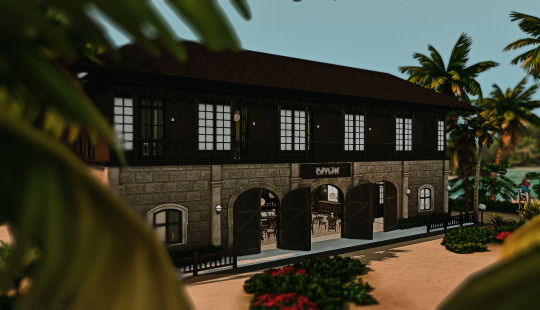
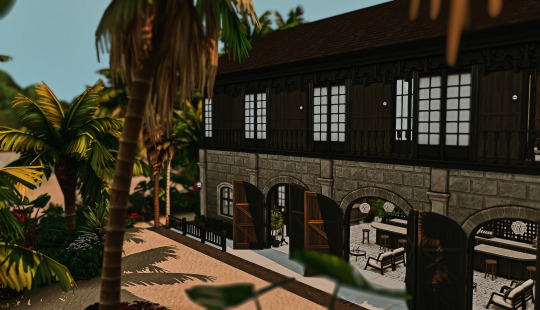
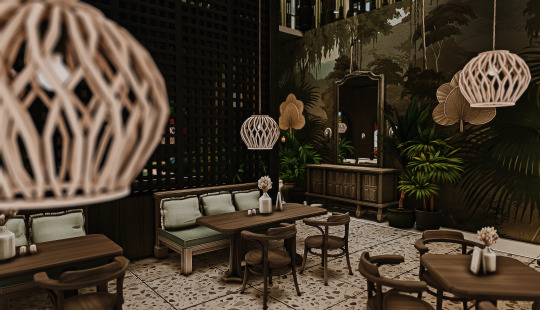
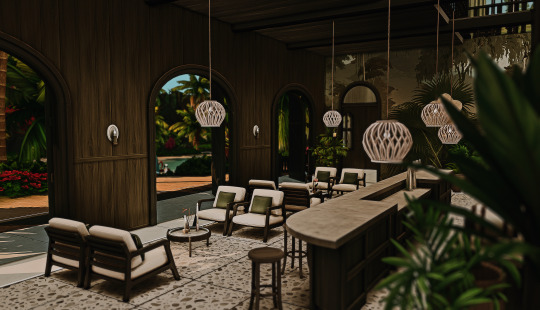

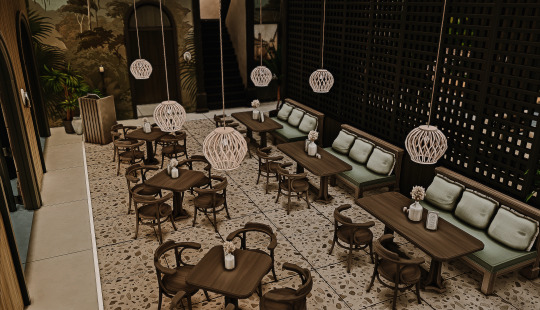
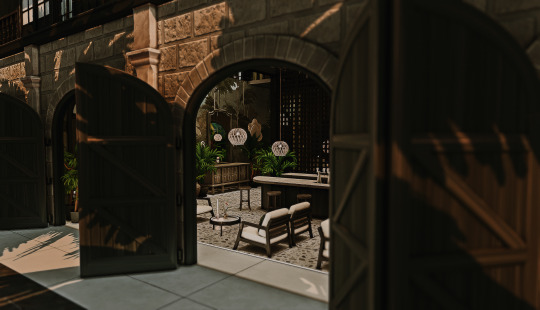
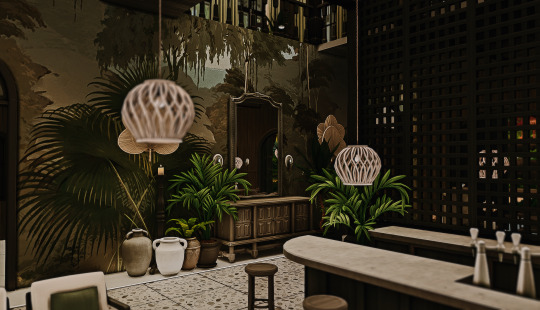
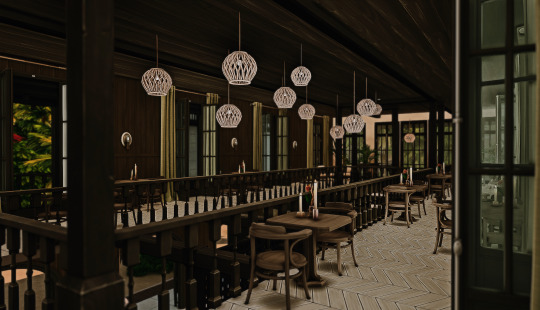
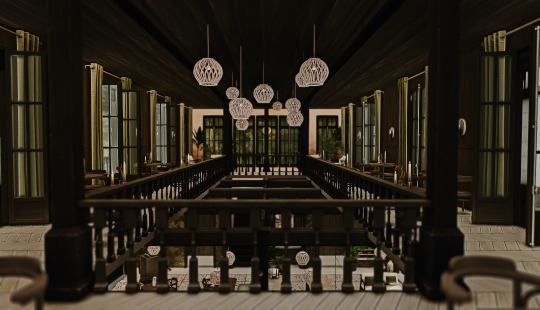
Casa Del Rosario [ Filipino Inspired Restaurant ] ♥ The Sims 4: Speed Build // CC
Welcome to Casa Del Rosario, an old Spanish Colonial home turned restaurant that serves authentic and homestyle Filipino dishes from all around the Philippines(Sulani). Whether you are craving something sweet or savoury, a meal cooked by Lolo (Grandpa) Romy at Casa Del Rosario never disappoints and will always put a smile on your face.
Note: The exterior of Casa Del Rosario was very much inspired by Spanish Colonial homes in the Philippines. Although recently renovated, Casa Del Rosario's original architectural character and features remain. The original wood, stone, and ornamentation throughout the building were maintained and acted as inspiration for the rest of the interior. Modern elements, along with furniture pieces made by locals, were introduced to the interior to blend in with the original structure and materiality of the building.
The world of Sulani was chosen as a representation of the Philippines as it shares similar island characteristics and landscape (Especially where I lived as a child). I was hoping to place this build in a heritage town similar to where I lived, but sadly, we do not have that kind of world in the Sims so while Sulani does not accurately depict the environment I had in mind for this build, it is the closest to the Philippines as it was going to get.
DISCLAIMER: As mentioned previously, the exterior of this build was INSPIRED by Filipino Spanish colonial architecture and is by no means accurate! (though I tried really hard to)
Lastly, one of the reasons why I decided to create this build and create this narrative was because I was re-watching @oshinsimss Growing together let's play and was inspired by how she showcases Filipino culture in her game! Her storytelling is what pushed me to create this build and it turned out to be one of my favourites.
♥ Please make sure to turn bb.moveobjects on!
♥ Please DO NOT reupload or claim as your own.
♥ Feel free to tag me if you are using it, I love seeing my build in other peoples save file
♥ Feel free to edit/tweak my builds, but please make sure to credit me as the original creator!
♥ Thank you to all CC Creators
♥ Please let me know if there's any problem with the build!
♥ SPEED BUILD VIDEO
0:02 Intro
0:46 Speed Build
14:02 Photos
♥ LOT DETAILS
Lot Name: Casa Del Rosario
Lot type: Restaurant
Lot size: 30x20
Location: Sulani
♥ MODS:
TOOL MOD by TwistedMexi
♥ CC LIST:
Awingedllama: Apartment Therapy
Sooky: Vertical Oil Paintings (landscape ver)
Charly Pancakes: Much, Maple & S Const. Pt 3, Soak
Felixandre: Chateau (all), Colonial pt 2 3, Florence pt 1, London Exterior, Paris pt 1, Candelabra, Grove, Paris pt 1, Shop the look
Harrie: Brownstone (all), Brutalist, Country, Shop the Look 1 & 2, Spoons pt 1 2 3, Jardane, Kyoto
Felixandre x Harrie: Orjanic (all), Kichen, Tiny Twavellers
TheClutterCat: Sunny Sundae pt 2
Pierisim: Coldbrew, MCM pt 3, Oak house pt 1 2 3, Unfold, Winter Garden
Max20: Poolside lounge pack
Charly pancakes x Pierisim: Precious Promises
Syboulette: Sandrine
Tuds: Cross, Ind
NOTE: i have not uploaded this build in the gallery yet, i will upload it asap
♥Tray File: Available on my Patreon
♥Origin ID: Applez
♥Twitter: Rheya28__
♥Tiktok: Rheya28__
♥Patreon: Rheya28
♥Youtube: Rheya28__
#ts4#sims 4#thesims4#sims#thesims#sims 4 builds#showusyourbuilds#sims 4 cc#builds#sims 4 screenshots#build#the sims 4 build#the sims 4 speed build
541 notes
·
View notes
Text
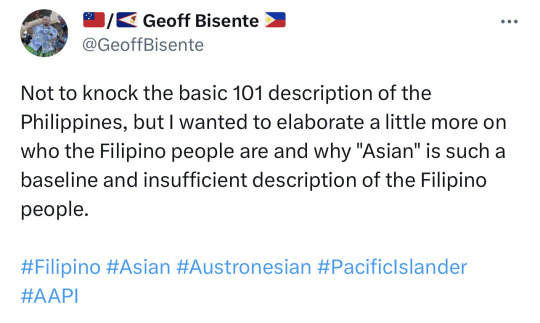
filipinos like geoff bisente who believe asian to be an “insufficient” description of the filipino people only think this because:
their idea of asia itself is biased and restrictive—they are either unaware, unappreciative, or deny the fact that the asian continent is inherently diverse. if you say the philippines is too diverse for its people to just be asian then you are inviting the question as to what being asian even means, from turkey to iran to china to sri lanka. what makes one cultural sphere more or less asian than the other? what makes asian an exclusive identity? how did east, south, and southeast asians become asian anyway?
they are preoccupied with uniqueness, hence the rejection of being “just asian” on the basis of being too diverse to be one. again, what does that mean for people living in a continent like asia? why the insinuation that other asian populations are less diverse than filipinos when, for example, indonesia itself has way more islands and people than us and yet are still asian? why is diversity the antithesis to being asian?
our austronesian heritage is overemphasized despite the fact that many, many other southeast asian populations (from southern thailand, insular and peninsular malaysia, indonesia, brunei darussalam, east timor, parts of vietnam & cambodia) and indigenous taiwanese peoples are also austronesian. these people are from a wide array of religions, ethnicities, and cultures too just like filipinos. but they are not more or less austronesian than us, let alone more or less asian.
filipinos are asian. southeast asian, maritime southeast asian, insular southeast asian. we’re not pacific islanders because we don’t come from the pasifika cultural zone. we have less in common with fijians and kanaka maoli people than we do with indigenous taiwanese and bornean peoples. whether you try to see it through a prehispanic or contemporary lens, you will find more interconnectedness between philippine populations and other southeast asians than you would with pacific islanders.
historic tattooing rituals, maritime cultures, and speaking austronesian languages are not similarities unique to filipinos and pacific islanders only but with other austronesian-speaking asians as well, even those who may not have been austronesians like the baiyue people. this also extends to other cultural features in the philippines brought about by european colonialism: this country is not the only asian country to be colonized by iberian or other european forces and to keep memories of colonialism through language, architecture, etc. so why is it us filipinos who always have to interrogate or be interrogated on our place in asia?
20 notes
·
View notes
Text


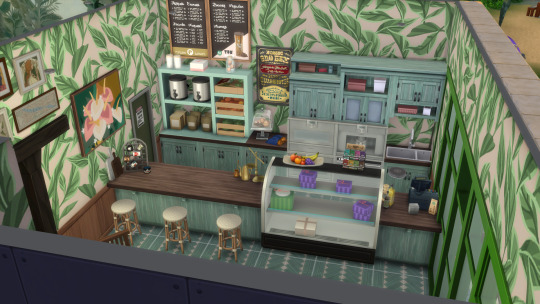
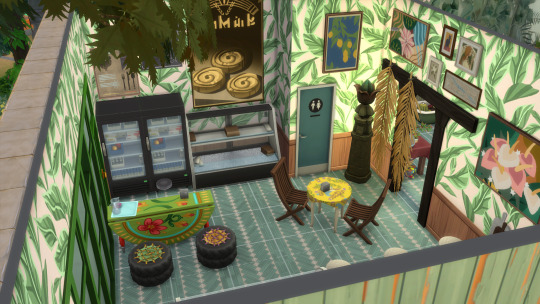
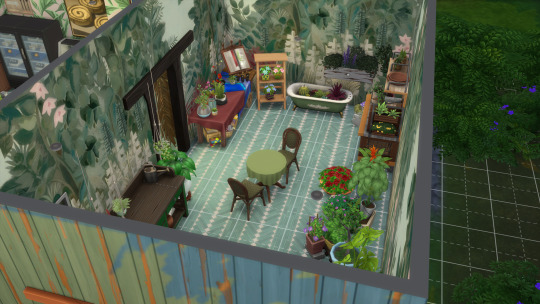

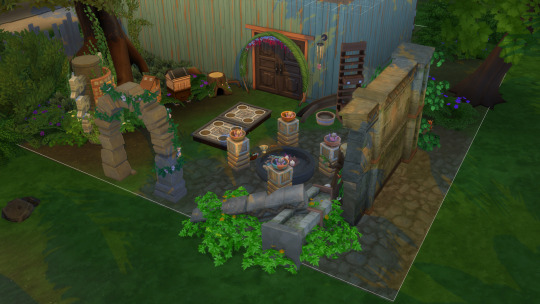
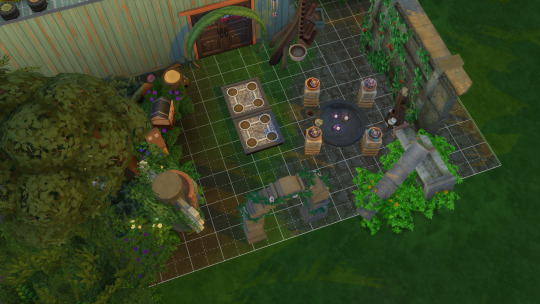
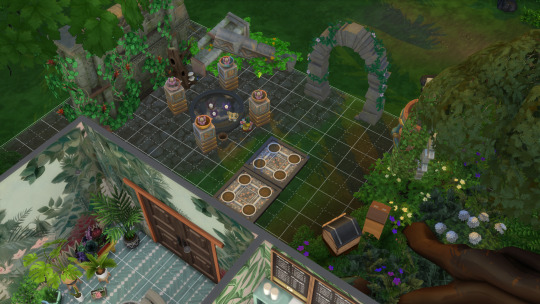
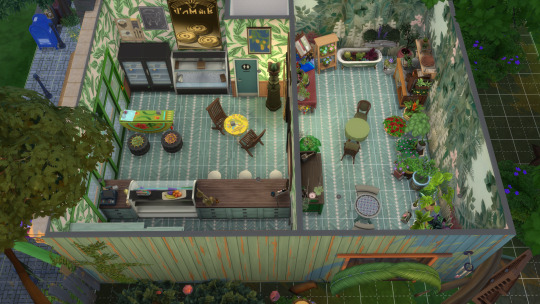
@herbalwarlock liked for a sims build [always accepting !]
okay but I really enjoyed this build ! I wanted to stay true to Raf's Filipino identity so I actually looked into pre-colonial architecture ad design, as well as maintain nods in the decoration itself.
my idea was a cafe / apothecary built on a spot of power, maybe an old temple dedicated to the Diwatas his clan gained their power from. in the back there's an altar kind of setup as well as growing plots. I took the lotus symbol and tried to carry it through to represent the magic; it's on the shop sign, there's a statue in the cafe, statues on the altar, and lotus candles in a few places.
I was also kinda riffing off the idea that maybe Raf does keep working as a lawyer but back in his mother's village the family has a small cafe / mercado kinda vibe ? (gotta pay the bills somehow, right ?) that his mother does work as a herbal witch out of. it's meant to a social, safe place. tbh I've always loved the lore and dynamic of the village witch / shaman, and it's found in so many cultures. but maybe when Raf is having a tough time or just needs a break he comes back to help out with the cafe.
I will admit that I got kinda, eh, tired near the end so some of the decorations aren't as thoughtful as I'd like. but I tried to maintain a bright color pattern that I was seeing in a lot of pictures, and tried to emulate Filipino culture in decor. I'll also say this was in part inspired by a lot of the shops I saw when I took a trip to Costa Rica; I know that isn't the same as the Philippines but I just. really appreciated that everything looked worn, not in a broken way but a well loved sort of way, and things were reused. when you have limited resource you have to make do with what you have, that kind of vibe.
anyway, I really did have a fun time with this build, definitely not an aesthetic I use often ! I hope you like it <3
#《 ° selkie.exe 》 oh im trash just not approved trash#° selkie does tumblr rp sims builds !#° okay to reblog !#° selkie plays games !
6 notes
·
View notes
Text
A Step Back In Time ⏱
EP 8 🎬

It’s been a year ago since we went to my first longest trip to the north, the provinces of Ilocos Sur and Ilocos Norte. These two provinces were located in Ilocos Region which is in the northern part of Luzon. Ilocos is best known for its historical and cultural sites that is really worth exploring. Our journey began with a scenic drive from Calamba Laguna to Ilocos Norte, as we made our way through the countryside, the lush greenery and picturesque landscapes served as a reminder of the beauty of nature. The long drive was made enjoyable with music and laughter, Our first destination was Laoag City and it was also where our accommodation located. Continuing our journey, we ventured to the Kapurpurawan Beach to see some of the windmills but sadly, we could not able to see them clearly, especially in Bangui, because it was raining heavily and the wind was so strong at the time we went.

No trip to Ilocos Norte would be complete without visiting the iconic Paoay Church, also known as the St. Augustine Church. This magnificent structure, built in the 17th century, showcased exquisite baroque architecture and stood as a testament to the rich history of the region. Visiting Vigan is a unique and unforgettable experience. This charming Spanish colonial town, located in the northern Philippines, features beautiful cobbled streets and authentic architecture that transports visitors back in time. Throughout the city, there are many museums, churches, and antique shops to explore. The highlight of our Vigan visit is the Raniag Festival Float Parade and their famous Empanada filled with grated green papaya, ilocos longganisa and egg.
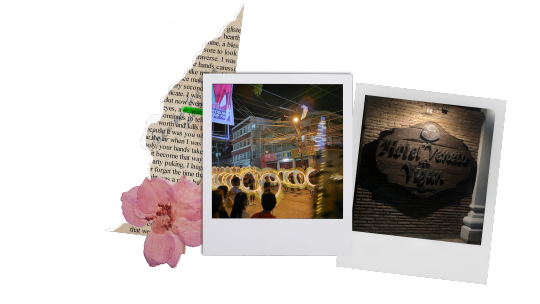
Our trip to Ilocos Norte was an experience that will forever hold a special place in our hearts. From the historical landmarks to the breathtaking natural wonders and the warmth and hospitality of the locals, every aspect of our journey was a testament to the rich cultural heritage and natural beauty of this extraordinary province. Ilocos Norte taught us the importance of exploring and appreciating our own country, as it holds treasures that are waiting to be discovered and celebrated.
12 notes
·
View notes
Text








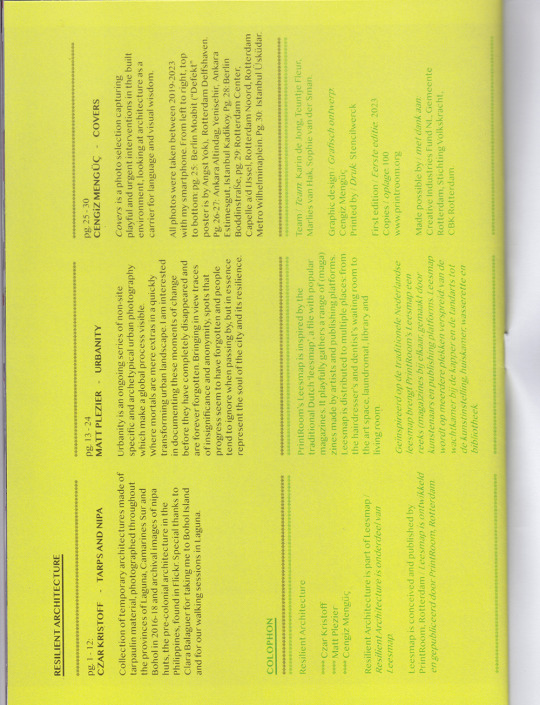

Preview of my contribution for Resilient Architecture (with Cengiz Mengüç and Matt Plezier) inside PrintRoom's Leesmap Vol. I. .
Collection of temporary architectures made of tarpaulin material, photographed from 2016-18 in the provinces of Laguna, Camarines Sur and Bohol Island, Philippines alongside with archival images of bahay kubo / nipa huts, the pre-colonial architecture in the Philippines, found on Flickr.
Leesmap is conceived and published by PrintRoom, Rotterdam. Printroom's Leesmap is inspired by the traditional Dutch "leesmap", a file with popular magazines. It playfully gathers a range of (maga)zines made by artists and publishing platforms. Leesmap is distributed in multiple places from the hairdresser's and dentist's waiting room to the art space, laundromat, library and living room.
Designed by Cengiz Mengüç. Printed by Stencilwerck.
#printroom rotterdam#printroom leesmap#leesmap#czar kristoff#resilient architecture#architecture#publishing#artist publisher#cengiz menguc#matt plezier#printroom#archive#nipa hut#bahay kubo#philippines#tarpaulin
4 notes
·
View notes
Text

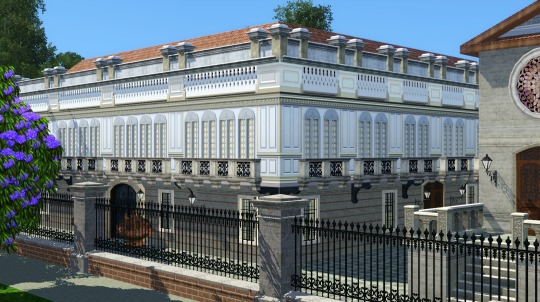
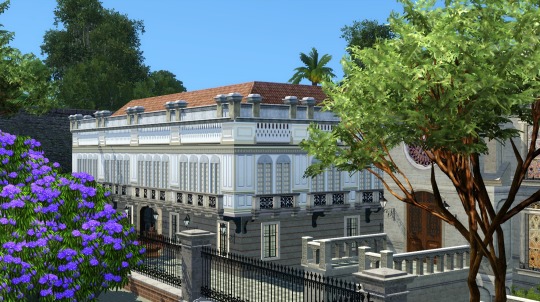
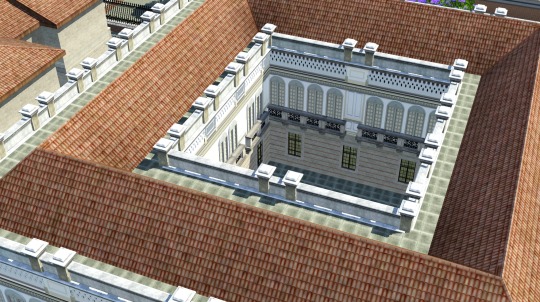
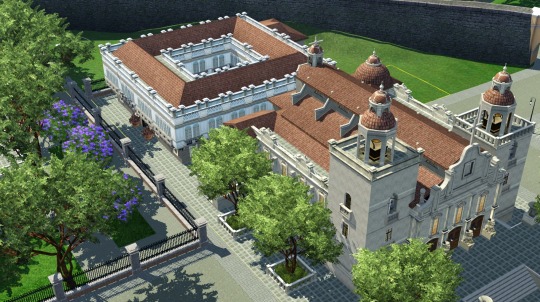
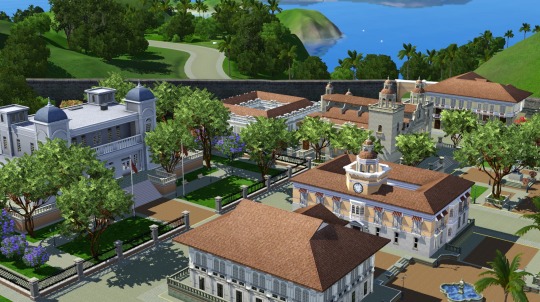
The old parish house, former residence of the clergy in charge of the city and now a guest house for esteemed guests of the church authorities. The old building was rebuilt in the 1800s into a magnificent structure with clear Moorish influences popular around the time. Surprisingly, this wasn't enough to have the people in charge move back in. The collection of art within it and the church does make it an attractive place to visit. This is clearly not a backstory meant to explain why the people in charge just don't live right next to the church as they would in real life due to a limitation in the way The Sims games handle community lots.
The parish house is a significant improvement I made on the older version and is inspired by two real world buildings in Manila's old city, Intramuros: The Augustinian Provincial House (today the ECJ building, which I did try to build once) and the Jesuit Convent (today the Museo de Intramuros). Both structures were destroyed during the closing days of World War II but were rebuilt with their facades mostly reminiscent of the original buildings several decades later. I took pictures!
Bonus view of the city. I decided to swap out the buildings at Fort. St. Simeon with the one that originally came with Isla Paradiso... at least for now.
#the sims 3#sims 3 historical#philippine colonial architecture#sims 3 san simeon#iglesia de san simeon
39 notes
·
View notes
Note
it was indeed me… wisty… the person who did not start a fresh tumblr therefore i have to use anon like an idiot… "1am amigo" wow called out but real
QUESTION: if u had to pick a place in PH to travel to, where and why?
what is this new fresh tumblr :((
i have a couple!!! but mainly Batanes Vigan and Palawan!
Batanes - it's the northern point of the whole Philippines. And its a storm capital, but also quite peaceful. Their houses are also quite a travel tour for architecture students. Also quite cold all year round!
Vigan - it's a colonial town. Quite full of history. Very Spanish colonizer times so quite interesting but so so so pretty.
Palawan - honestly not a beach person but willing to make an exception for this nature wonder like so breathtaking.
HBU!!! Anywhere u wanna go in SG (or even outside of SG)?
2 notes
·
View notes
Text
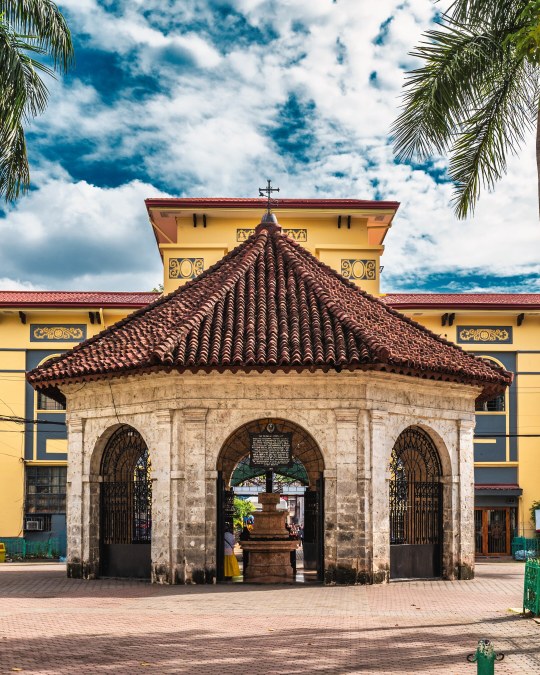
Cebu, a province in the Philippines, boasts a rich cultural heritage that is vividly reflected in its colonial architecture. The colonial buildings in Cebu stand as tangible remnants of the region's historical past, offering a glimpse into a time when the Philippines was under Spanish rule.
One of the most iconic colonial structures in Cebu is the Magellan's Cross, located in the heart of Cebu City. This cross, planted by Ferdinand Magellan in 1521, symbolizes the arrival of Christianity in the Philippines. The site has become a pilgrimage destination and is surrounded by a chapel that showcases a fusion of Spanish and indigenous design elements.
4 notes
·
View notes
Text





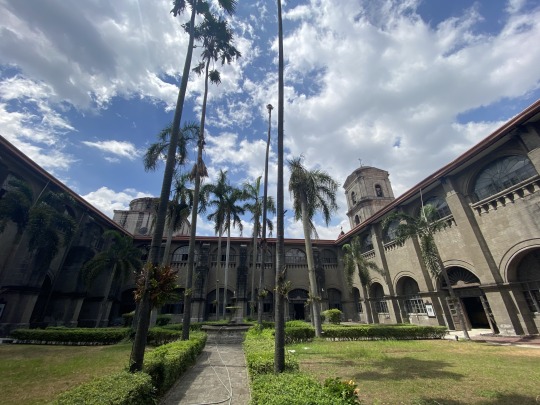

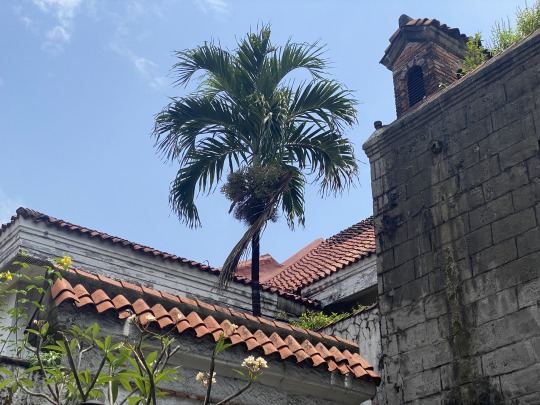



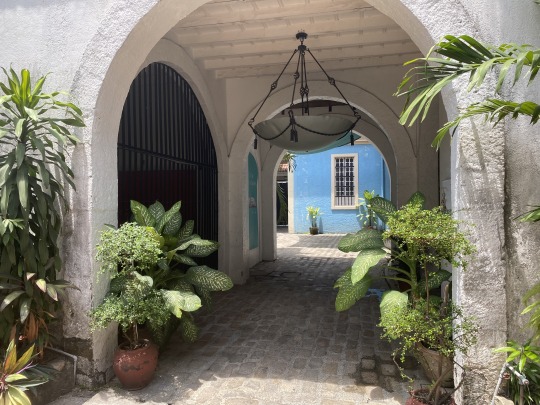
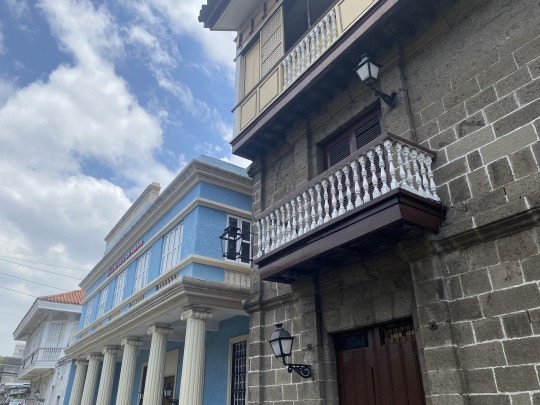

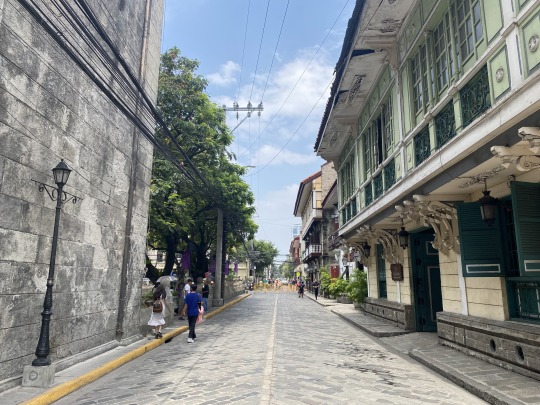
City Shots 6 (2024)
One of my long overdue personal trips was one I spent in the Old City. I've made plans to visit the place before but due to unexpected upheavals (with me moving last year and all), it took until Lent 2024 for me to actually do so. If you haven't been following me, I have a longstanding interest in historic Philippine architecture which had its roots nearly 10 years ago when I started building colonial-themed houses in the Sims 3.
My trip was, like the one in 2022 before it, made during Lent. Unlike in 2022, however, I traveled alone, which gave me plenty of opportunities to explore Plaza San Luis and its neighbors.
I only had time to explore the area around Plaza San Luis and three of its museums (only two of which I elected to share). Inasmuch as I would want to take pictures of the rest of the city's museums (including the ones situated at Fort Santiago) and the other structures around the district, I ran out of time and energy due to how mercilessly hot the day was.
Like with my previous post, more information is shown under the cut.
Camera: iPhone 11
Date: 26 March 2024
Location: Plaza San Luis Complex, Intramuros, Manila, Philippines
Usage: By request. Noncommercial only.
The Old City of Intramuros (meaning "Within the Walls") was the nucleus of modern Manila, built over the flattened remains of the fortress city-state encountered by the conquistador Miguel Lopez de Legaspi in 1570. The city was the crown jewel of the Spanish Philippines and was once the home of the city's elite. Today, the city's residents comprise mostly of students and informal settlers, with the majority of people being tourists and the people who work in the businesses supporting the tourism industry.
Many of the sites in the city are in various states of ruin and restoration, very few of which besides the walls being the original structures at all. Most of the buildings in the city (including the entirety of Plaza San Luis) consist of reconstructed replicas. The Casa Manila Museum (the large yellow structure) isn't even based on a structure from the Old City but is a rebuilt building from a different district altogether.
The only building from the era that survived to be restored is San Agustin Church, the oldest surviving colonial stone structure in the country. Much of the Old City was destroyed toward the end of World War II.
#photography#city shots#urban#cityscapes#architecture#buildings#trees#colonial philippines#urban photography#church#museum
6 notes
·
View notes
Text

The Philippines is a tropical paradise that boasts of a rich culture, breathtaking landscapes, and friendly locals. From pristine beaches to majestic mountains, the country is home to some of the world's most stunning tourist destinations. The is country known for its beautiful tourist destinations that showcase its natural beauty, cultural heritage, and historical significance. In this blog, we'll take a closer look at some of the top tourist destinations in the Philippines.
One of the most popular tourist destinations in the country is Boracay Island. Located in the Western Visayas region, Boracay Island is famous for its white sandy beaches, crystal clear waters, and vibrant nightlife. Visitors can enjoy a variety of water activities such as snorkeling, diving, and parasailing. The island is also known for its food scene, with many restaurants serving fresh seafood and local delicacies. It is famous for its white sand beaches, crystal clear waters, and vibrant nightlife. Boracay has consistently been voted as one of the world's best beaches, making it a top tourist destination in the Philippines. (Source: CNN Travel - https://www.cnn.com/travel/article/boracay-reopening-philippines/index.html)
Another must-visit destination in the Philippines is Palawan. This province is home to stunning limestone cliffs, crystal-clear lagoons, and vibrant marine life. Visitors can explore the world-renowned underground river in Puerto Princesa, go island hopping in El Nido, or relax in the picturesque Coron Island. Palawan is also a great destination for nature lovers, as it is home to many endangered species such as the Philippine mouse-deer and the Palawan bearcat. It is also known for it's stunning beaches, limestone cliffs, and crystal clear waters. Palawan is also known for its underground river, which is one of the Seven Wonders of the World. (Source: Philippine Department of Tourism - https://www.tourism.gov.ph/destinations/palawan)
If you are looking for a cultural experience, the city of Vigan is a great destination to visit. Located in the northern part of Luzon, Vigan is a UNESCO World Heritage site that showcases Spanish colonial architecture. Visitors can take a walk along the cobblestone streets, admire the well-preserved ancestral houses, and learn about the city's rich history. Vigan is also known for its local delicacies such as the Vigan longganisa and empanada. Overall, the Philippines is a country full of natural wonders and cultural treasures that's are definitely worth visiting.
In conclusion, the Philippines has something for every type of traveler, whether you're looking for adventure, relaxation, or cultural experiences. With its stunning landscapes, friendly locals, and rich culture, the Philippines is truly a destination worth visiting.
Submitted by:
Krysha Soldevilla
Coleeza Manzano
Tamara Guerrero
Annika Hermoso
Jacob Tamonan
2 notes
·
View notes